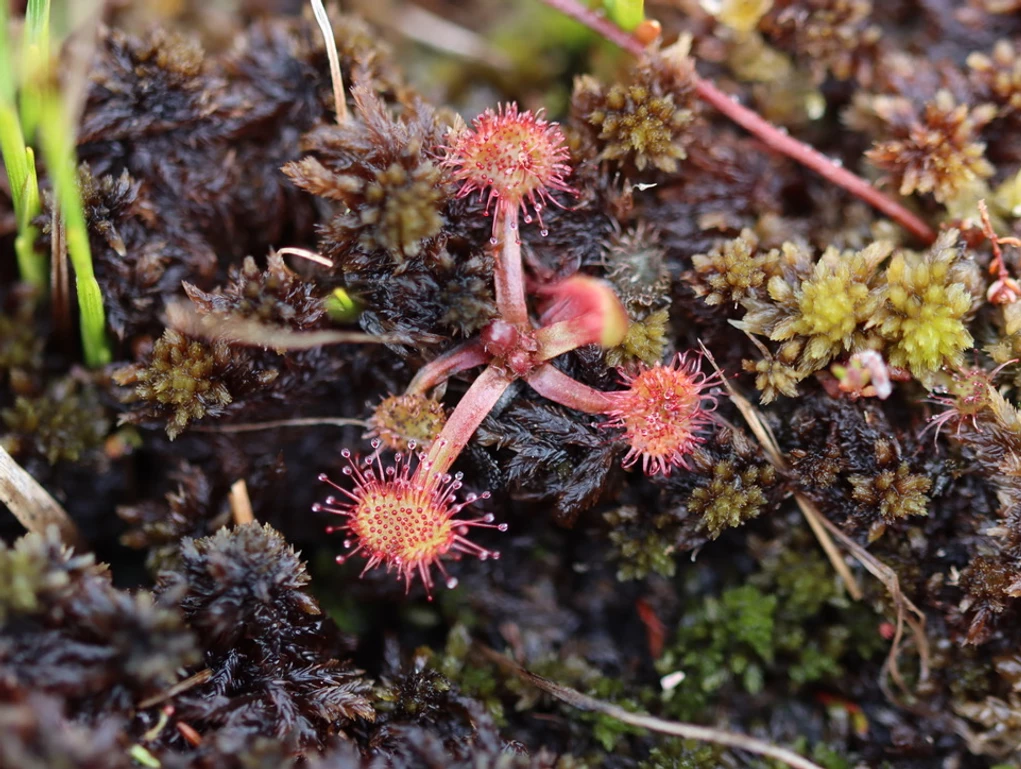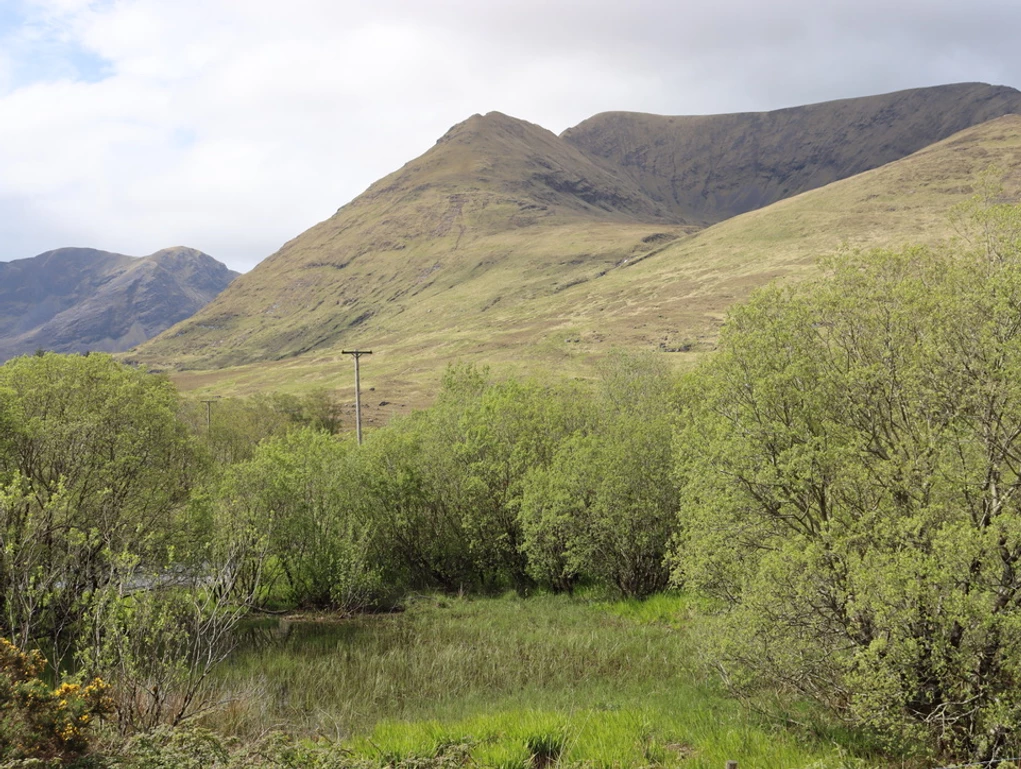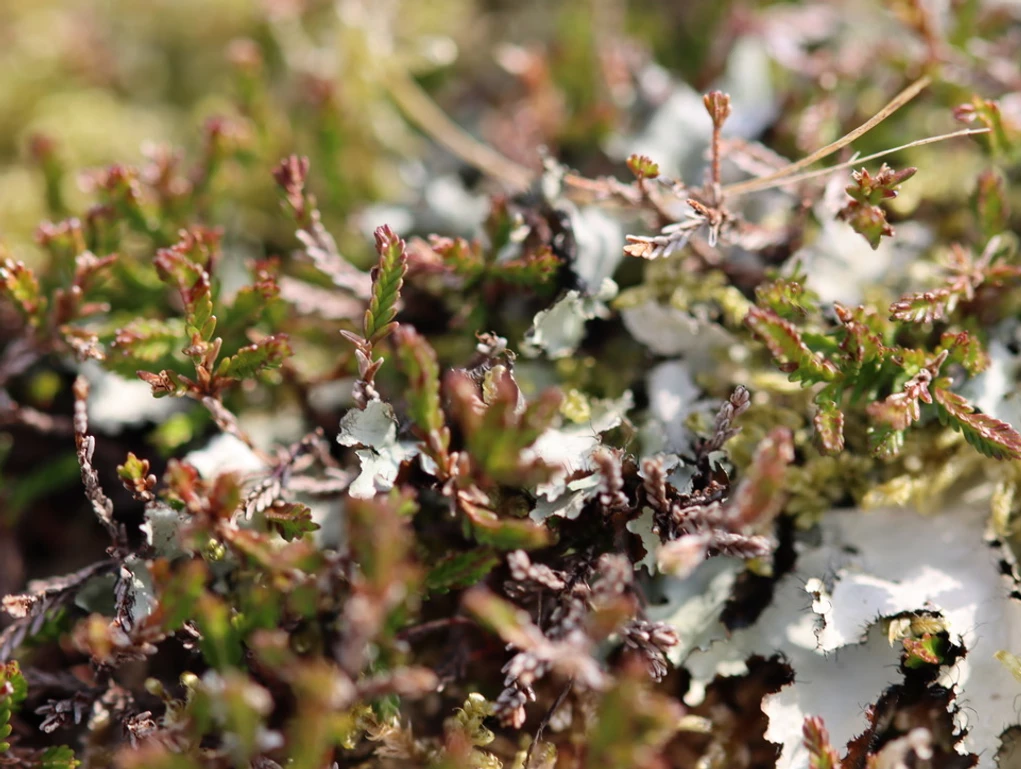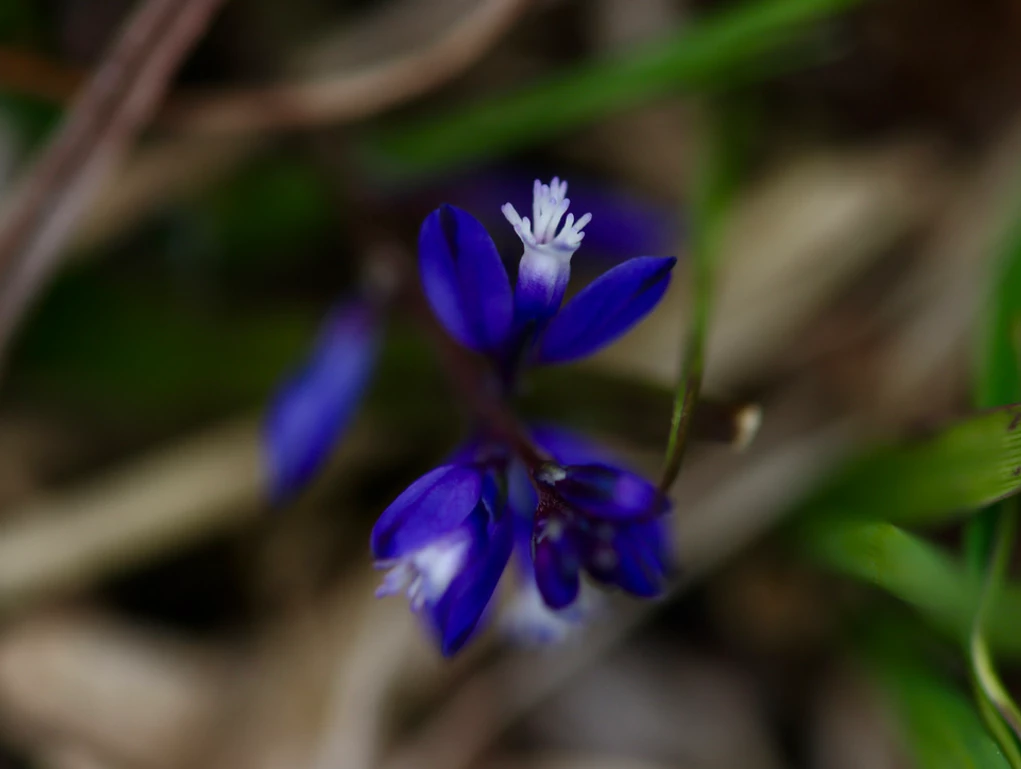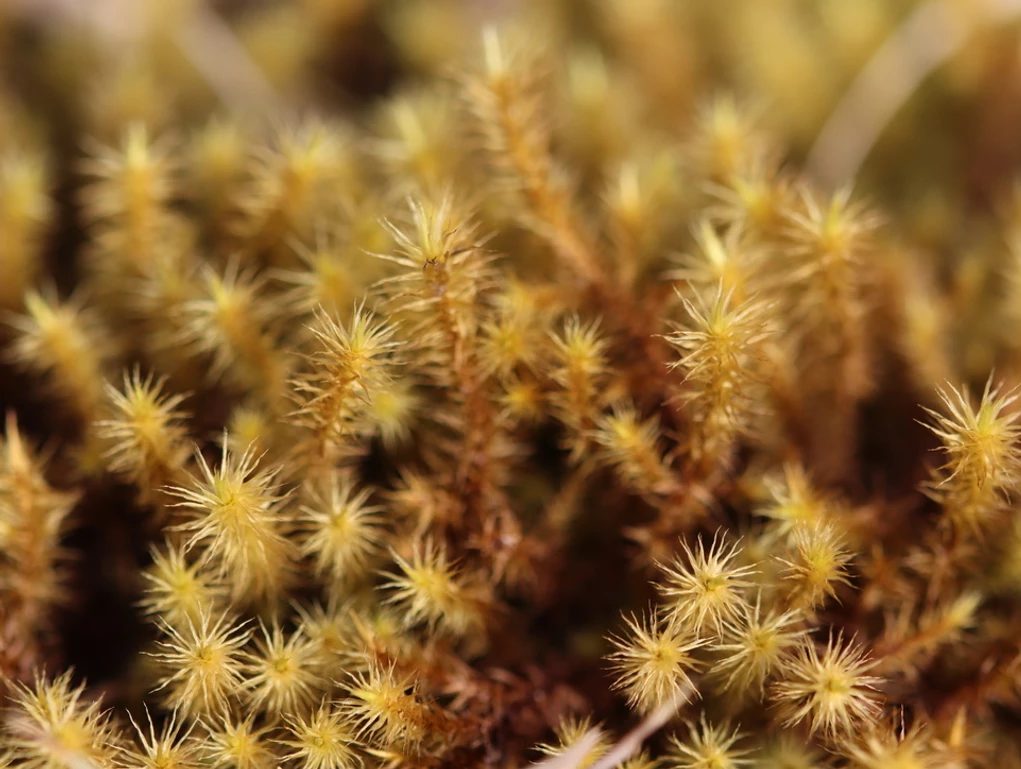
Blanket Bog
What is Blanket Bog?
Blanket bog occurs in cool, wet, oceanic climates on flat or gently sloping land where drainage is poor and peat has accumulated to a depth of at least 0.5m. Blanket bogs started to form in Ireland between 7,000-10,000 years ago. They were originally confined to isolated wetter areas such as shallow lakes and hollows, but became more widespread around 4,000 years ago when the climate became wetter. High levels of rainfall, where rainfall exceeds the loss of water through evaporation and plant transpiration, leads to near constant saturation and provides the conditions for the growth of bog mosses and sedges, which partially decompose and slowly accumulate as peat.
Blanket bog is a habitat typical of the Atlantic biogeographical region in areas of high rainfall such as Ireland and western United Kingdom, and is very rare and localised elsewhere in northwest France and northwest Spain. Blanket bog habitat in Ireland once covered an estimated 773,640 hectares. For many decades, landuse policies relating to blanket bogs have varied considerably. These have ranged from the active planting of commercial coniferous forestry, large-scale commercial cutting and burning of peat, increasing stock levels on hills beyond their capacity, and subsequent reduction of grazing levels. Today, the status of our blanket bogs, under our Article 17 reporting to the European Commission, is considered ‘bad’ in terms of condition. This indicates that in many cases blanket bogs are losing important species, are releasing carbon to the environment, and providing sub-optimal water quality. In other words, many blanket bogs are not functioning in the provision of ecosystem services.
Under the Habitats Directive, Ireland has identified 50 areas as Special Areas of Conservation (SAC) for the protection of blanket bog. These SACs include lowland and mountain blanket bog areas, predominantly along the western Atlantic seaboard but also widely distributed on upland areas. Many of these SAC sites identified for the protection of blanket bogs are extensive and include complexes of other habitats such as dry heath, wet heath & quaking areas, transition mires, dystrophic lakes, oligotrophic lakes, scree, acid grasslands, rivers and streams. Protected species found include dunlin, golden plover, whooper swan, Greenland white-fronted goose, hen harrier, merlin, lapwing, redshank, red deer, Irish hare, otter, freshwater pearl mussel, Atlantic salmon and marsh fritillary. Some of these SACs have boundaries that were drawn to protect river catchments and can encompass areas of cutover or degraded blanket bog. The estimated current area of active blanket bog within the 50 SACs is 154,195ha.
Wild Atlantic Nature aims to conserve and restore to favourable conservation status Ireland’s SAC network of blanket bog. Once the degraded peatlands have been restored to active blanket bogs, they will become carbon sinks, sequestering carbon from the atmosphere into vegetation which will eventually become peat. Successful rehabilitation of degraded blanket bog will also serve to protect the immense carbon stores that reside in the peat layers that have taken thousands of years to accumulate. Restoration will reverse the current process where degraded blanket bog, a carbon source, is releasing stored carbon into the atmosphere.

